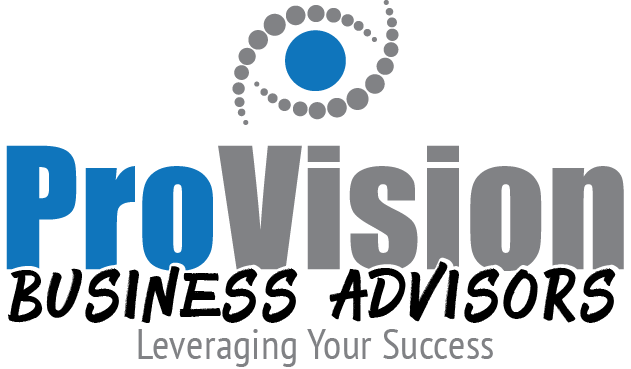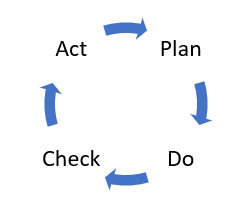One of the challenges we have encountered in a world where communication takes less effort than the snail mail time and it doesn’t require an investment of a stamp for each message we want to send, email has contributed to the state of overwhelming many business owners are grappling with.
Not unlike many other challenges, business owners can improve the situation with intentional email management, education and training. Taking a “do nothing” stance is a decision that is unlikely to improve the situation.
Given the impact on your mental health from the state of overwhelm and fear of missing out as well as the financial cost (hourly rate * time to manage email) to continue with your current system, the business case can easily make this one process more effective and efficient.
Let’s get proactive!
Step 1
Reflect on your role in contributing to the problem. What are you tolerating? What are you reinforcing and rewarding? Categorize the challenges by source: clients, team members, subscriptions/lists, suppliers, others. We are part of the problem, so we need to be part of the solution.
Get to the root cause. Are you using email as a client management system rather than a more appropriate tool?
Plot the communication on Stephen Covey’s 4 Quadrants – which communication is:
- Urgent and important?
- Non-urgent and important?
- Urgent and not important?
- Non-urgent and not important?
Step 2
Draft or sketch out the ideal state several months away. Create the plan with measurable improvements /targets.
Identify what you can do differently to positively achieve the result. What do you need to stop doing? Continue doing? Start doing?
What’s the plan to get there?
Step 3
Measure your results. Get feedback. Are you on the right track to achieve the intended result?
Step 4
What are you learning along the way? What actions do you need to take based on the experience? Reflect on results.
Draft your plan, execute the plan, reflect and check results and take action based on what you’ve learned/experienced. PDCA Explained
Tips to Integrate into your Email Management System
Email management is a system/process. Chance is that you have not dedicated time on a regular basis to improve your email system and it has gradually become a larger challenge/issue in your organization. As your organization grows, so too has the issue. Your current system has evolved by default. Now it’s time to get proactive and intentionally shape the system into a more effective and efficient one.
Sending Emails
Train your team members to write better emails and demonstrate these tips and practices in your own emails to them. That’s right, YOU go first.
- Use accurate subject lines
- Learn how to search rather than spending time categorizing and filing
- Don’t use business for personal communication
- Use templates
- Brevity – email is communication / transmittal. Use a five sentences email and signature script
- Use more live calls for longer communication or when multiple subjects need to be discussed
- Do not send an email to multiple recipients without telling them what they are supposed to do with it
- Give full context at the beginning of the message
- When you send an email to multiple people, note why each person should care at the top
- Make action requests clear
- One subject per email in most cases. Combine separate points into one message – condense the number of open conversations you have with clear responses – instead of sending 50 tiny messages, combine them into one.
- Edit forwarded messages to make them relevant for the next recipient and not get anyone in trouble
- Include topic in the subject line when scheduling a call or meeting
- Make your email one page or less. Include the meat of the communication first as many people never fully open their email and read-only what appears in the reading pane.
- Understand how people prefer to be reached and how quickly they respond – pick up the phone more
- Restrain “reply all” unless essential that everyone on the email sees your reply
How to Receive Email
Good change management practices include communication about the reason for the change and the need to change. Ensure that you communicate with those who will be most impacted by your changed behaviour and improvements to your email management system. You may need to roll out training or educational programs if your plan is to improve email management throughout the organization. Incorporate your email best practices into your staff onboarding and team development programs.
For clients, part of your client onboarding program should include a section on email and other forms of communication so that you establish expectations from day 1.
- Check email at defined times each day. Let people know that if they need to reach you urgently, email isn’t the way. When it is email management time, do not allow distractions so you can power through them quickly. Turn off automatic notifications and close your email until “time to do email”. If you have assistants, they may be able to check your email and conduct the initial triage according to your instructions.
- Consider using an inbox filing system to quickly file emails into “Action”, “Waiting For”, “Read” folders. Use a paper response list to triage messages you receive – write down what you need to do or whom you have to call and attack the responses based on priority.
- Charge people for sending you messages. People will think about their behaviour more and not haphazardly send emails.
- Send all messages that come in during your vacation time to the delete folder with a vacation responder telling people they’ll need to reach out again when you return from vacation as their email has been deleted. If it is urgent, call __________ or message ______________.
- Train your team to be relevant. If you are being sent irrelevant emails, respond with “Relevant?”. This will help you train people on what you consider relevant. The goal is to calibrate relevance, not criticize the team.
- Answer briefly – when someone sends you a long email, reply with 3 words, “Yup, great idea”. They will learn not to expect a long response from you and you can then respond at your leisure.
- Send out delayed responses – for non-urgent communication, type response but have it sent in a couple of days – training people to not expect an immediate response.
- Ignore it – if it is something important, you’ll hear about it again. People will call you or stop by.
- Use rules and notifications to alert you to important messages, delete unread messages, archive old messages and unsubscribe you from email lists.
- Use your email signature and your auto-response as one way to communicate changes to your own behaviour to those sending you emails.
If you would like to receive tooltips and articles such as this one to your inbox once a month, click here to sign up for our newsletter.





2 Comments
by postingxrlv
Dear sir!
Widespread placement of ads on the web for growth of factors influencing consumer behaviour.
https://xn—-ftbeand5abdikisgee.xn--p1ai/home/
Behavioural factors are certain actions of visitors on the website, such as:
logging in to the website, viewing pages, time spent on the website, “clicks” on links, returns to the online resource.
Unique Trading Offer:
Mass placement of your ads online in order to attract potential customers.
Growth of behavioural factors occurs by the large-scale placement of your ads without specifying the address of your internet resource, but with the indication of other features identifying only your company according to which you presently become №1 in the search engine results. These features can include a phone, a unique name of the website or company, an identifier (product code, number, promotions, services), a physical address of the firm and etc.
MAIN AIM:
The large-scale attraction of customers to your website, products and services.
Growth of factors influencing consumer behaviour.
YOUR BENEFIT:
An increase in webpage visitors who will find your internet resource directly from ads using search engines as well as through additional results of a search itself related to a large range of search queries on your subject.
ADVANTAGES OF THIS AD:
1. Mass promotion.
2. High-speed placement.
3. Cost.
4. Topic orientated.
5. The widest reach.
6. Targeting.
7. Growth of factors influencing consumer behaviour.
REASONS TO ORDER MASS ADS PLACEMENT ONLINE ДЛЯ ORGANIC GROWTH OF BEHAVIOURAL FACTORS:
1.Mass attraction of potential customers to your services and products through direct access from ads.
2.Organic promotion of your web page, due to search engine beginning to additionally suggest it for the largest range of search browser queries based on your topic.
3. The absence of “filters” and “bans” of search, due to ads being published without an indication of an link to the internet resource.
4. An increase in online resource traffic, which leads to an increase in orders and an expansion of the customer base.
5. “Warm traffic”, since only interested visitors visit the website.
6. Attraction of legal entities and individuals.
7. Analysis of demand for services and goods.
8.Publication of your ads in different countries around the world.
WHERE ADS ARE PLACED:
Ads are placed: on billboards, in guest books, on forums, in comments, in catalogues.
Ads are placed on your: landing pages, YouTube videos, phones, websites, social media accounts, and on links to your other ads.
BAN:
In this type of ad a ban by search engine is not possible, since ads are placed without specifying an URL to the internet resource.
Working method:
You send us the text of the ad, where your unique name and identifier is indicated at the end of the message, according to which an interested user can easily find your web page in search engine results in order to get more information about your product.
To do this, identifier or a unique name must be published in the appropriate section of your online resource и easily and quickly be found in search results.
Macros:
Randomisation of ads is carried out according to the formula, which is commonly accepted by many programs. As a result of randomisation, many unique ads are obtained from a single ad variant.
This is obtained as a result of manually synomising the ad text, while the meaning of the messages does not change and remains understandable.
Mass placement of ads on the web for organic growth of factors influencing consumer behaviour.
by Stephanie
Hello, I wish for to subscribe for this blog to get most up-to-date updates, thus where can i do it please assist.
My website – SEO lists
Comments are closed.